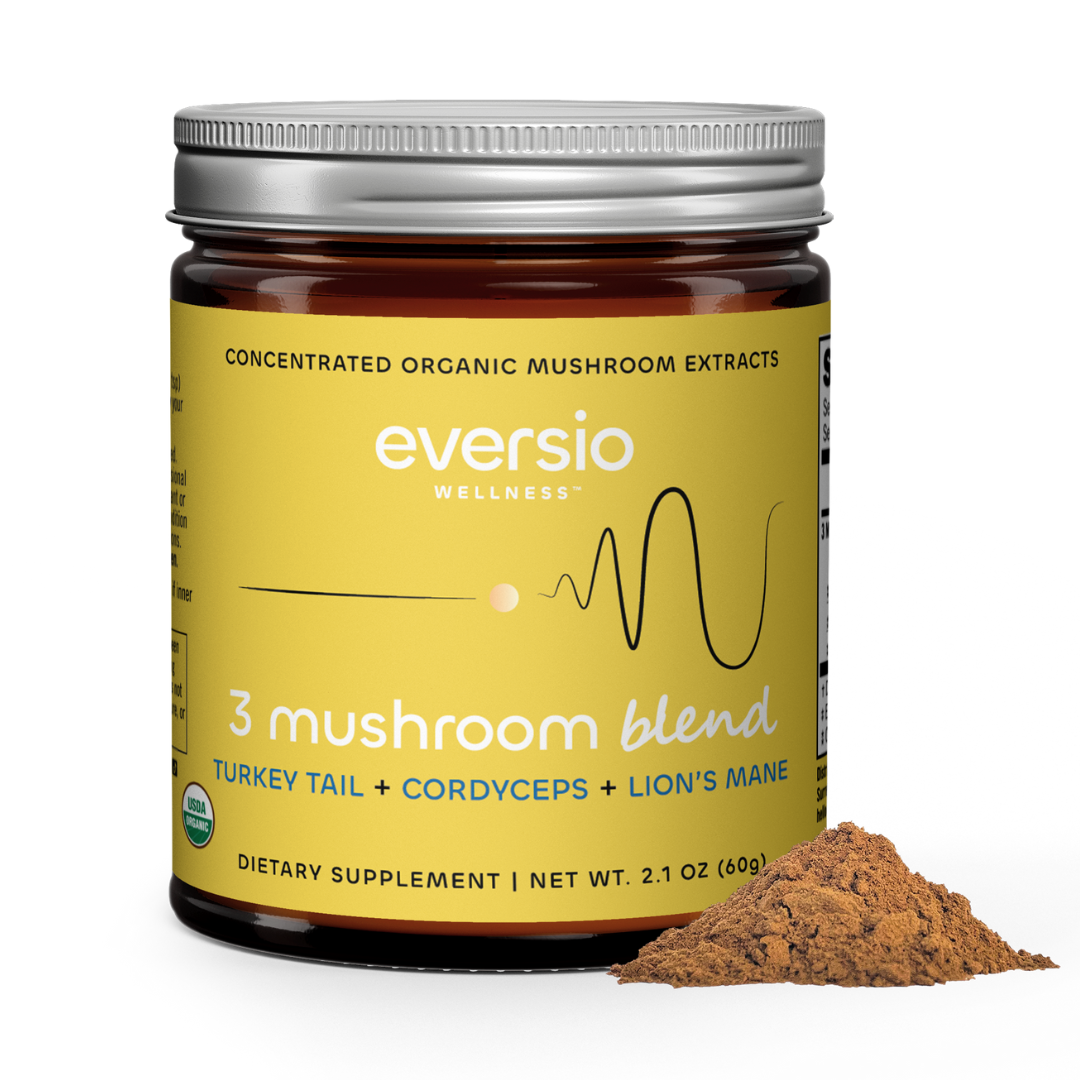February 7, 2024 | Dr. Silvana Jakupovic, ND
Red mushrooms, distinguished by their vivid hues, stand out as a distinct group within the diverse world of fungi. These mushrooms, often found decorating forest floors and enriching the underbrush, are visually striking and ecologically significant. This article will probe into the various species of red mushrooms, offering insights into their identification, ecological roles, and cultural meanings. While the allure of these fungi is undeniable, they also pose challenges in identification, especially distinguishing between edible and toxic varieties.
Historical and Cultural Significance of Forest Red Mushrooms
Red mushrooms have long been intertwined with human history and culture, appearing in many contexts ranging from ancient folklore to modern culinary arts. Historically, some fungi, like the iconic Amanita muscaria, have been used in shamanistic rituals in various parts of the world, believed to induce visions and spiritual experiences.
In European folklore, these mushrooms are often associated with magic and fairy tales, typically depicted as the seating choice of fairies and gnomes. Beyond myths and legends, red mushroom varieties have held functional significance in various cultures. Traditional healers have used them for their purported healing properties, though modern science cautiously approaches these claims due to some species' potential toxicity. In the culinary world, certain types of red mushrooms are celebrated for their unique flavours and textures. However, the line between edible and toxic red mushroom varieties remains a crucial consideration for foragers and chefs alike.
Basics of Mycology: Wild Red Mushrooms
Mycology, the study of fungi, reveals that mushrooms are not plants but a distinct form of life belonging to the kingdom of Fungi. They play critical roles in ecosystems as decomposers, breaking down organic matter and recycling nutrients. Unlike plants, mushrooms do not photosynthesize; they absorb nutrients from their environment, ranging from dead wood to living plants and even animals.
The visible part of a mushroom, often the cap and stem, is just a small part of the organism. The majority exists underground or within its food source as a network of fine threads called mycelium. Identifying mushrooms, including the red cap mushroom varieties, involves observing characteristics such as cap shape, colour, gill structure, spore colour, and habitat. These features can vary widely even within the same species, making identification a challenging yet fascinating aspect of mycology. For those new to the world of mushrooms, understanding these basics is crucial for appreciating the complexity and diversity of these organisms.
Mushroom Identification Tips: Red Mushrooms Field Guide
In exploring red mushroom identification, a common set of red mushroom characteristics helps in their identification and understanding. One of the most notable features is, of course, their striking red coloration. This vibrant hue can range from deep crimson to bright scarlet, often serving as a warning signal in nature. This phenomenon, known as aposematism, is a strategy various species use to signal toxicity or unpalatability to potential predators. The red pigment in these mushrooms is not just for show; it often indicates the presence of certain chemicals that can be harmful if ingested.
Surface texture is also an important identifying feature. Some red mushrooms have a smooth, glossy cap, while others might be scaly or fibrous. For example, the Hygrocybe punicea, known for its bright red cap, has a distinctly smooth and waxy surface. This texture can be critical in differentiating between species, especially in the field where subtle distinctions are critical.
Lastly, the red mushroom habitat where these mushrooms are found offers clues to their identification. Red mushrooms are commonly found in forested areas, often forming symbiotic relationships with certain tree species. The Amanita muscaria, for instance, is frequently found under conifers and birch trees. Understanding each species' preferred habitat aids in accurate identification and informs mushroom foragers and enthusiasts about where to look for these fascinating fungi.
Red Mushroom Guide: Identifying Red Mushrooms

Red Fungi Species: Amanita Mascaria (Fly Agaric)
The Amanita muscaria, commonly known as Fly Agaric, is one of the most iconic red mushrooms, easily recognizable by its bright red cap with white spots. The cap can range from 8 to 20 cm in diameter and is initially dome-shaped before flattening with age. The white spots are remnants of the universal veil that encases the mushroom as it grows. The stem is white, 5-20 cm tall, and bears a ring. Native to temperate and boreal regions of the Northern Hemisphere, Fly Agaric is often found in pine and birch woodlands.
Despite its enchanting appearance, it is a psychoactive toadstool containing compounds such as ibotenic acid and muscimol, which can cause hallucinogenic effects. Historically, it has been used in shamanic rituals in various cultures, but it is toxic and not recommended for culinary use.

Poisonous Red Mushrooms: Russula emetica (The Sickener)
Russula emetica, known as The Sickener, is another well-known red mushroom, distinguishable by its bright red, convex cap, which becomes flatter and can develop a depression in the center as it matures. The cap's diameter ranges from 3 to 11 cm. This species has a white stem and white to cream gills. Found in coniferous and deciduous forests, particularly under pine trees, The Sickener is widely distributed across North America and Europe. As its common name suggests, this mushroom is poisonous and causes gastrointestinal distress if ingested. Its flesh is brittle, a characteristic common to many Russula species, and it has a mild, slightly fruity smell.

Edible Red Mushrooms: Hygrocybe punicea (Crimson Waxcap)
Hygrocybe punicea, or the Crimson Waxcap, stands out with its strikingly vibrant red-to-orange cap, which can fade to yellow with age. The cap is conical or bell-shaped, measuring 2 to 7 cm in diameter, with a slimy surface in wet conditions. It has a slender, waxy, red stem growing up to 10 cm tall. This species is found in grasslands, particularly those that are unimproved or semi-improved and are often an indicator of ancient meadows due to their preference for undisturbed habitats. The Crimson Waxcap is distributed across North America and Europe. While it is considered edible, its culinary value is limited due to its slimy texture and relatively small size.
Find Red Mushrooms: Other Notable Red Mushrooms
In addition to these, several other red mushroom species are worth noting. For example, the Scarlet Elf Cup (Sarcoscypha coccinea) is known for its vibrant red, cup-shaped fruiting bodies and is often found on decaying wood. The Vermilion Waxcap (Hygrocybe miniata) is another small, brightly coloured mushroom found in grasslands. While these species add aesthetic value to their environments, many also indicate ecological health and biodiversity.
Red mushroom ecology, with its varied appearances and habitats, offers a fascinating glimpse into the world of fungi. Each species, from the hallucinogenic Fly Agaric to the toxic Sickener and the delicate Waxcaps, contributes uniquely to their ecosystems and holds a distinct place in the lore and science of mycology. However, their beauty often belies their potential dangers, emphasizing the importance of accurate safe mushroom identification and respect for their toxic properties.
Red Mushrooms Mycology Guide
We've journeyed through a fascinating world of vibrant fungi, each with unique characteristics and ecological roles. From the iconic Amanita muscaria to the lesser-known but equally intriguing species, red mushrooms present a world rich in diversity and intrigue. As we reflect on the ecological importance and conservation concerns surrounding red mushrooms, it becomes clear that these fungi are not just a part of our natural world but are integral to the health and balance of our ecosystems.
This guide has aimed to deepen your understanding and appreciation of red mushrooms, encouraging responsible exploration and continuous learning. As you venture into the woods or scrutinize these fungi in your backyard, remember the intricate world of red mushrooms, a world that continues to captivate and educate us with every discovery.
Related Articles
• Fungi Finds: World’s Weirdest Mushrooms
• From Forest to Fork: How Mushrooms are Revolutionizing Plant-Based Meat
• Functional Mushrooms: Pot of Gold at the End of the Rainbow




















Leave a comment
All comments are moderated before being published.
This site is protected by hCaptcha and the hCaptcha Privacy Policy and Terms of Service apply.